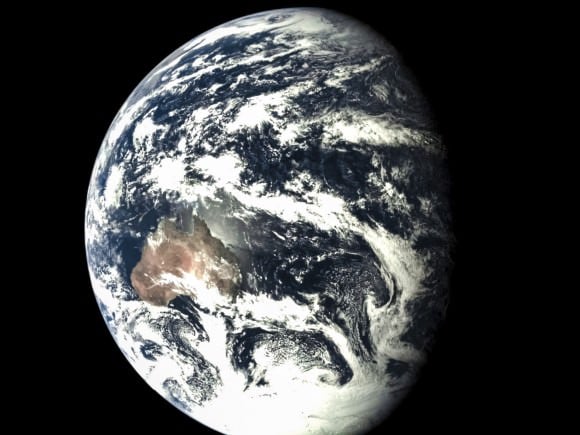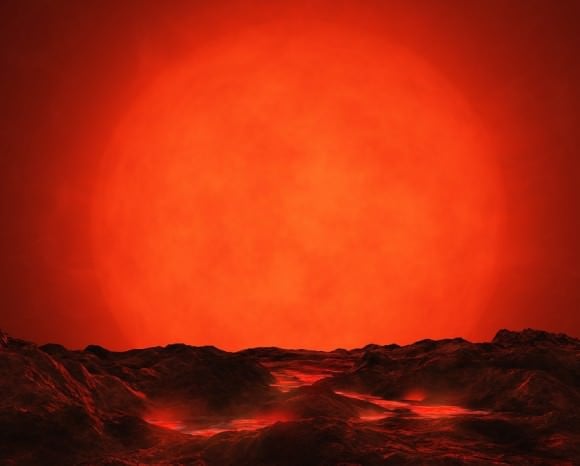[embed]
In a previous article I investigated what would happen if the Earth
stopped turning entirely
, either locking to the Sun or the background stars.
If it happened quickly, then results would be catastrophic, turning the whole planet into a blended slurry of mountains, oceans and trees, hurting past a hundreds of kilometers per hour. And if it happened slowly, it would still be unpleasant, as we stopped having a proper day/night cycle. But it wouldn't be immediately lethal.
But would happen if the Earth somehow just stopped in its tracks as it was orbiting the Sun, as if it ran into an invisible wall? As with the Earth turning question, it's completely and totally impossible; it's not going to happen. And with the unspun Earth, it would be totally devastating and super interesting to imagine.
[caption id="attachment_115753" align="alignright" width="580"]
Credit: Xinhua News, via UnmannedSpaceflight.com.[/caption]
Before we begin to imagine the horrifying consequences of a total loss of orbital velocity, let's examine the physics involved.
The Earth is traveling around the Sun with an orbital velocity of 30 kilometers per second. This is exactly the speed it needs to be going to counteract the force of gravity from the Sun pulling it inward. If the Sun were to suddenly disappear, Earth would travel in a perfectly straight line at 30 km/s. This is how orbits work.
If the Earth's orbital velocity sped up, then it would go into a higher orbit to compensate. And if the Earth's orbital velocity slowed down, then it fall into a lower orbit to compensate. And if the Earth's orbital velocity was slowed all the way down to zero? Now we're cooking, literally.
First, let's imagine what would happen if the Earth just suddenly stopped.
As I mentioned above, the Earth's orbital velocity is 30 km/s, which means that if it suddenly stopped, everything on it would still have 30 km/s worth of inertia. The escape velocity of the Earth is about 11 km/s.
In other words, anything on the Earth's leading side would fly off into space, continuing along the Earth's orbital path around the Sun. Anything on the trailing side would be pulverized against the Earth. It would be a horrible, gooey mess.
But even if the Earth slowed gently to a stop, it would still be a horrible mess. Without the outward centripetal force to counteract the inward pull of gravity, the Earth would begin falling towards the Sun.
How long would it take? My integral calculus is a little rusty, so I'll draw upon the calculations of Dave Rothstein from Cornell's
Ask an Astronomer
. According to Dr. Rothstein, the whole journey would take about 65 days. It would take 41 days to cross the orbit of Venus, and on day 57, we'd cross the orbit of Mercury.
As they days went by, the Earth would get hotter and hotter as it got closer to the Sun. Aatish Bhatia over at WIRED did some
further calculations
to figure out the temperature. A month into the freefall, and the average temperature on Earth would have risen to 50 degrees C. 50 days in and we'd be about 125 C. On the final day, we'd get up to 3,000 C… and then, that would be that.
Of course, this is completely and totally impossible. There's no force that could just stop the Earth in its tracks like that. There is, however, a plausible scenario that might drag the Earth into the Sun.
In the far future, the Sun will turn into a red giant and expand outward, engulfing the orbits of Mercury and Venus. There's still an argument among astronomers on whether it's going to gobble up Earth as well.
[caption id="attachment_112376" align="alignright" width="580"]
Poor Earth. © Digital Drew.[/caption]
Let's say it does. In that case, the Earth will be inside the atmosphere of the Sun, and experience a friction from the solar material as it orbits around, and spiral inward. Of course, at this point you're orbiting
inside
the Sun, so falling into the Sun already happened.
There you go. If the Earth happened to stop dead in its orbit, it would take about 65 days to plunge down into the Sun, disappearing in a puff of plasma.
 Universe Today
Universe Today


